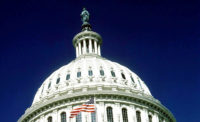The union steward had just recounted an incident where a supervisor asked one of his workers to step into standing water to work on corroded gauges near the coker. The work needed to be done immediately as it would delay ongoing maintenance on the fractionator to take on different stock feed.
The worker saw the water would be a hazard to his work and requested a pump be used to displace the water before he began the task. The supervisor, aware that the work was behind schedule, instructed the worker to engage in the task immediately in “no uncertain terms.”
The worker complained to the nearby union steward who then had, what he described as a very direct conversation with the supervisor, imploring him to have the pump retrieved. In what turned out to be a very public argument the steward reminded the supervisor that he can go, and has gone, all the way to the top leadership, reporting incidents like this — where supervisors required one of his workers to take a risk. When this happens, he warned, the supervisor has hell to pay.
The supervisor relented and ordered the worker to go retrieve the pump while he made a call to his managers telling them that the timeline would have to be pushed back further. A call he didn’t want to make.
The steward telling this was making the point that supervisors and management were the source of all ills. “We can do all the behavioral observations we want, have all the meetings we want, but the supervisors will still tell us to take risks.”
He sat back as workers engaged in front line supervisor bashing. It felt good as a catharsis and it was reinforced by others jumping on the bandwagon.
Digging deep
To redirect everyone away from the emotional dysfunction that too often sucks all the wind out of employee committee meetings, I reiterated that by the time workers find themselves in a position to take risks, we have already lost. There were a whole host of behaviors done, mostly by people unaware they had helped create the conditions for workers to take risks. If we blame workers we just stop there in our understanding of the incident. If we see workers’ risk-taking as an opportunity to learn, we just may discover the interlocking behaviors from others that need to be addressed as well.
The worker’s supervisor instructing him (antecedent) to work in standing water or else (consequence) is a good example of an interlocking behavior. The supervisor’s behavior sets the occasion for the worker’s behavior.
Behavioral Systems Analysis is an emerging area of our science. In BSA we seek to understand the systems that are influential on the local behavior. These systems factors are proximal (near) to the worker like their supervision, tools and equipment, and task steps, but also include more distal (further away in time and space) factors such as workflow processes, procurement engagements, engineering considerations, and ultimately leadership and customer behaviors.
Yes, the supervisor’s behavior sets the occasion for the worker’s behavior. But what set the occasion for the supervisor’s behavior?
What behaviors let the gauges corrode even though they were to be inspected during preventive maintenance?
What behaviors left the pumps on the far side of the plant instead of near the tool crib?
What behaviors led to the planning where multiple maintenance activities dependent on each other occur on the same day?
What behaviors led to the delays that put the work behind schedule?
Where were the contractors responsible for water mitigation?
What behaviors in process engineering required the work to be done?
What behaviors in accounting contribute to the costs of delays?
What leadership behaviors pushed the schedule for other leaders who behaved?
Why did God let it rain so hard that morning?
See the big picture
Every person in every organizational function (operations, HR, procurement, engineering, maintenance, process engineering, accounting, labor relations, security, distribution, receiving… everyone) needs to pinpoint their behaviors that directly or indirectly impact the behaviors of the front line worker. We need to see how these types of “at-risk” behaviors in the system are being reinforced so we can make the needed changes.
Quality improvement is about where value is created. That place is the front line of operations, where the work is done, where money is made. Every place else, as operations folks are fond to say, is “overhead” – where money is spent. Money is spent there so that the front line can better help you make money. The more these functions are aligned, Deming taught us, the more value can be created by the front line.
I’ll see your value and raise you safety. The systems of behaviors interlocking across people working in different functions of your company must be aligned for the front line for the safe work to be done.
On that wet afternoon the incident of the supervisor instructing the worker to take a risk was not the only interlock to be concerned about. There was another practiced interlock between the union steward and the supervisor -- one is attempting to influence the other’s behavior.
That argument, those threats, and the resulting hard feelings was a dysfunctional practice that happens over and over again between employees and management. It then occurred to me: “a whole host of behaviors, done by many other people, most of whom are unaware, lined up perfectly to create the conditions for stewards and supervisors to get in fights.”



